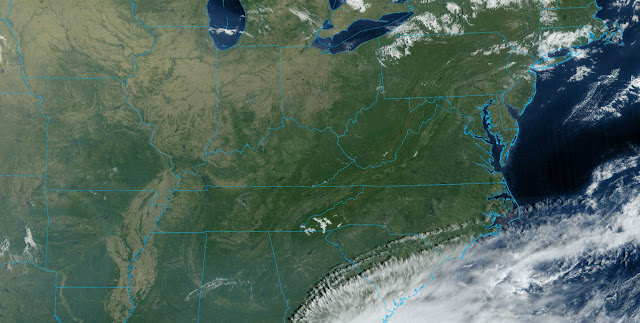Sunspots One Day Before Geomagnetic Storm
Months of cloudy weather finally ended enabling my first solar imaging
session since July. Lovely cloudless skies continued for several days in early October. The following October 9th satellite view shows clear sky over Virginia, a good opportunity for solar observing.
Conditions were wonderful as I began imaging at 9:30 am EDT. It was 60 degrees under cloudless blue sky with no wind. When I quit one hour later, the temperature had risen to only 63 degrees. Seeing conditions were good, but not exceptional. Although the Sun displayed few dramatic prominences this day, several nice sunspots and filaments were spread across the solar disc as shown in the next 9-panel mosaic.
From left to right above are sunspots 3852 at lower left, 3849 and 3850 in the middle, and 3848 on top. Remnants of departing sunspot 3842 are on the right edge of the solar limb. (Click on the image to enlarge.)
A few prominences can be seen on the limb when the mosaic above is processed differently. Enlargement also reveals some evidence of activity rising slightly above sunspot 3842 near the right limb.
Four major sunspots show good detail in the following 4-panel mosaic with 3848 at the top, 3849 and 3850 in the middle, and 3852 on the bottom left. The big filament to 3848's left was long lasting. Enlarge the image and notice a small eruption from 3852's umbra in the lower left corner.
The next image's lower left shows a small white flare erupting above 3852's umbra at 9:37 am EDT.

No comments:
Post a Comment